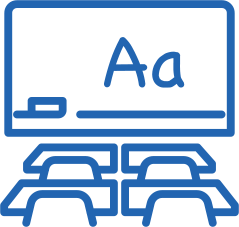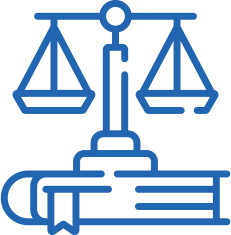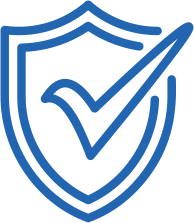Negotiations & Labor Relations
Facts About Our District
We believe in sharing the facts. Here's what you should know about how Porterville Unified supports students, teachers, and families.
 |
|
|
|
|
||
 |
|
|
|
|
||
 |
|
|
 |
|
|
 |
|
|
|
|
||
 |
|
|
|
|
||
 |
Our Commitment
|
Recent FAQs
What issues are currently being negotiated, and how do class sizes or classroom aides relate?
The current impasse centers on salary increases and Article 34 disciplinary procedures. Class size limits and other provisions, such as working hours and classroom aides, are already addressed in the existing contract and are not part of this bargaining cycle.
Why doesn't the district respond to every union claim?
The district focuses on actual negotiation issues rather than engaging with every rumor or criticism. Responding to everything posted- especially items unrelated to actual contract talks - can distract from productive bargaining and resolution of legitimate disputes.
How does the district respond to anonymous testimonials circulated by PEA?
The district is committed to transparency while respecting personnel confidentiality requirements. We've reviewed the anonymous testimonials on PEA's website and found significant concerns with their accuracy and completeness. Many contain factual errors (such as the impossible "14-day suspensions" when Article 34 limits suspensions to 12 days), omit crucial context, and present one-sided narratives that make it difficult to correlate with actual cases. While we cannot discuss specific personnel matters, we can clarify that professional standards exist to protect students, and disciplinary actions are based on documented evidence and due process, not arbitrary decisions.
The district is committed to transparency while respecting personnel confidentiality requirements. We've reviewed the anonymous testimonials on PEA's website and found significant concerns with their accuracy and completeness. Many contain factual errors (such as the impossible "14-day suspensions" when Article 34 limits suspensions to 12 days), omit crucial context, and present one-sided narratives that make it difficult to correlate with actual cases. While we cannot discuss specific personnel matters, we can clarify that professional standards exist to protect students, and disciplinary actions are based on documented evidence and due process, not arbitrary decisions.
How does Article 34 prioritize student safety while protecting teacher rights?
Article 34 ensures that student welfare remains paramount while providing teachers extensive due process protections. For example, when teachers fail to complete required safety training (like EpiPen certification for students with life-threatening allergies) over multiple years despite repeated notifications, the process allows for progressive intervention while maintaining focus on student protection. The process includes multiple opportunities for correction, representation rights, and appeal procedures, but recognizes that student safety cannot be compromised indefinitely while awaiting teacher compliance.
Article 34 ensures that student welfare remains paramount while providing teachers extensive due process protections. For example, when teachers fail to complete required safety training (like EpiPen certification for students with life-threatening allergies) over multiple years despite repeated notifications, the process allows for progressive intervention while maintaining focus on student protection. The process includes multiple opportunities for correction, representation rights, and appeal procedures, but recognizes that student safety cannot be compromised indefinitely while awaiting teacher compliance.
How do anonymous testimonials misrepresent the progressive discipline process?
These materials typically present final disciplinary actions as "isolated incidents" while omitting years of progressive intervention attempts. For example, what appears as "unfair suspension for missing training" may actually represent Level 5 discipline following documented patterns including classroom management failures, student complaints, parent concerns, and repeated non-compliance with safety requirements. The testimonials remove this context to make legitimate accountability measures appear arbitrary, when documentation shows extensive efforts to support teacher improvement before reaching final disciplinary steps.
What types of support and interventions does the district provide before discipline is considered?
The district has implemented multiple layers of support to help teachers succeed. These include classroom coaching support, classroom observations with feedback, CSIS specialist support during instruction, additional training opportunities, and several informal conferences prior to any formal disciplinary action.
Article 34 cases generally involve situations where extensive support was provided but concerns persisted, particularly when student welfare or the learning environment was affected. The goal of these interventions is always to promote growth and improvement before discipline becomes necessary, except in the cases of egregious misconduct, which warrant immediate action.
In one of the anonymous testimonials, law enforcement didn’t pursue charges. Why would the district continue to use the Article 34 disciplinary process and implement a suspension?
Employment standards for teachers are necessarily higher than criminal prosecution thresholds. The fact that conduct doesn't rise to criminal charges doesn't mean it's appropriate in a school setting. Teachers are held to professional standards that protect students' well-being. In one case that was later referred to the California Commission on Teacher Credentialing (CTC) after law enforcement didn’t pursue criminal charges, the Commission revoked the teacher's credential entirely - the harshest possible penalty - demonstrating that multiple independent reviews found the conduct inappropriate for someone working with children.
What constitutes inappropriate teacher–student interactions, and how does the district determine when professional boundaries have been crossed?
Professional boundaries exist to protect both students and teachers and to ensure safe, supportive learning environments. Inappropriate interactions can include: engaging students in conversations about adult topics, excessive personal texting or social media contact, creating situations where students feel uncomfortable, physical contact beyond professional norms, or allowing students in private spaces without proper supervision.
When concerns are raised, the district investigates thoroughly by gathering witness statements, reviewing communications, and documenting patterns of behavior. Professional standards are clear that adults must maintain appropriate relationships with minors in their care. Actions such as discussing pornography, bragging about the teacher’s own recreational drug use, or creating physically inappropriate situations constitute violations regardless of intent. The guiding priority is always student safety and the preservation of a positive learning environment.
What happens when a teacher's case is referred to the Commission on Teacher Credentialing (CTC)?
When discipline exceeds 10 days, the district is required by law to report the matter to CTC for their independent review. The district does not make recommendations about credential status - CTC makes that determination independently. Recent CTC decisions have actually acknowledged that district-imposed discipline was appropriate and effective, demonstrating that Article 34 discipline serves its intended corrective purpose. Not all referrals result in credential action - teachers receive due process at both the district and state levels.
In one case, CTC found that the teacher "took the district's discipline seriously. They changed their behavior and returned to the classroom with a better understanding of appropriate behavior." The Commission determined that additional state-level suspension "would do little to ensure they do not reoffend" because the district's 12-day suspension had already achieved its corrective purpose.
How can people access accurate information about Article 34 disciplinary procedures, and what transparency has the district provided?
Anyone can review the disciplinary procedures in Article 34 of the contract. The district has provided PEA’s negotiating team with comprehensive, redacted documentation from multiple serious disciplinary cases (totaling over 60 pages). These records demonstrate the district’s commitment to thorough investigations, documented evidence, just cause requirements, and due process protections. They also show that suspensions result from serious misconduct supported by extensive documentation, not from arbitrary administrative decisions.
These materials illustrate the full process: the time invested in investigations, the evidence gathered from colleagues and community members, the required documentation, and the progressive steps followed to address concerns. This information offers a clear picture of how Article 34 ensures fairness and accountability in maintaining professional standards.
PUSD Negotiations Updates

Porterville Unified School District Labor Partners
Porterville Unified School District is proud to work alongside our labor partners in service to our students and community.
• Porterville Educators Association (PEA)
• California School Employees Association (CSEA), Chapter 38
(CSEA) Tentative Agreement Reached with CSEA - May 22, 2025
(PEA) PUSD Negotiations Update #2 - May 19, 2025
(PEA) PUSD Negotiations Update - April 22, 2025